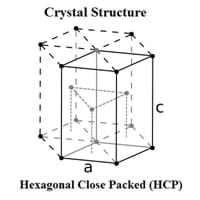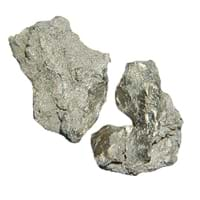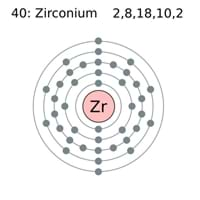What is Zirconium?
Periodic Table
0
Symbol
Zr 0
Group Number
4 14
Period Number
5 3
Block
d block 0
Element Family
Transition Metal 0
CAS Number
7440677 23
Space Group Name
P63/mmc 0
Space Group Number
194.00 5
Facts
0
Interesting Facts
- Zirconium metal can resist to weak acids.
- Zirconium metal reacts with oxygen and nitrogen in the atmosphere.
Sources
Found in Minerals, Mining, Ores of Minerals 0
History
0
Who Discovered
Martin Heinrich Klaproth 0
Discovery
In 1789 0
Abundance
0
Abundance In Universe
5 * 10-6 % 13
Abundance In Sun
~0.000004 % 16
Abundance In Meteorites
0.00 % 17
Abundance In Earth's Crust
0.01 % 14
Abundance In Oceans
0.00 % 23
Abundance In Humans
0.00 % 15
Uses
0
Uses & Benefits
- As this metal does not absorb neutrons; It is used in nuclear power stations.
- Its oxide is used in ultra strong ceramics. It is also used in manufacturing Crucibles.
Industrial Uses
Aerospace Industry, Ammunition Industry 0
Medical Uses
NA 0
Other Uses
Alloys, Nuclear Research, Research Purposes 0
Biological Properties
0
Toxicity
NA 0
Present in Human Body
Yes 0
In Blood
0.01 Blood/mg dm-3 21
In Bone
0.10 p.p.m. 23
Physical
0
Melting Point
1,852.00 °C 15
Boiling Point
4,377.00 °C 11
Appearance
0
Physical State
Solid 0
Color
Silvery White 0
Luster
Lustrous 0
Hardness
0
Mohs Hardness
5.00 8
Brinell Hardness
638.00 MPa 19
Vickers Hardness
820.00 MPa 15
Speed of Sound
3,800.00 m/s 20
Optical Properties
0
Refractive Index
Not Available 0
Reflectivity
Not Available 0
Allotropes
No 0
α Allotropes
Not Available 0
β Allotropes
Not Available 0
γ Allotropes
Not Available 0
Chemical
0
Chemical Formula
Zr 0
Isotopes
0
Known Isotopes
24 15
Electronegativity
0
Pauling Electronegativity
1.33 30
Sanderson Electronegativity
0.90 25
Allred Rochow Electronegativity
1.22 26
Mulliken-Jaffe Electronegativity
Not Available 0
Allen Electronegativity
1.32 34
Electropositivity
0
Pauling Electropositivity
2.67 24
Ionization Energies
0
1st Energy Level
640.10 kJ/mol 44
2nd Energy Level
1,270.00 kJ/mol 54
3rd Energy Level
2,218.00 kJ/mol 62
4th Energy Level
3,313.00 kJ/mol 60
5th Energy Level
7,752.00 kJ/mol 10
6th Energy Level
9,500.00 kJ/mol 15
7th Energy level
Not Available 0
8th Energy Level
Not Available 0
9th Energy Level
Not Available 0
10th Energy Level
Not Available 0
11th Energy Level
Not Available 0
12th Energy Level
Not Available 0
13th Energy Level
Not Available 0
14th Energy Level
Not Available 0
15th Energy Level
Not Available 0
16th Energy Level
Not Available 0
17th Energy Level
Not Available 0
18th Energy Level
Not Available 0
19th Energy Level
Not Available 0
20th Energy Level
Not Available 0
21st Energy Level
Not Available 0
22nd Energy Level
Not Available 0
23rd Energy Level
Not Available 0
24th Energy Level
Not Available 0
25th Energy Level
Not Available 0
26th Energy Level
Not Available 0
27th Energy Level
Not Available 0
28th Energy Level
Not Available 0
29th Energy Level
Not Available 0
30th Energy Level
Not Available 0
Electrochemical Equivalent
0.85 g/amp-hr 63
Electron Work Function
4.05 eV 26
Other Chemical Properties
Anti Corrosion, Flammable, Ionization, Radioactive Isotopes, Solubility 0
Atomic
0
Atomic Number
40 72
Electron Configuration
[Kr] 4d2 5s2 0
Crystal Structure
Hexagonal Close Packed (HCP) 0
Crystal Lattice
HCP-Crystal-Structure-of-Zirconium.jpg#100 0
Atom
0
Number of Protons
40 71
Number of Neutrons
51 54
Number of Electrons
40 71
Radius of an Atom
0
Atomic Radius
160.00 pm 27
Covalent Radius
175.00 pm 23
Van der Waals Radius
200.00 pm 28
Atomic Weight
91.22 amu 66
Atomic Volume
14.10 cm3/mol 36
Adjacent Atomic Numbers
0
Previous Element
59 0
Next Element
62 0
Valence Electron Potential
80.00 (-eV) 18
Lattice Constant
323.20 pm 53
Lattice Angles
π/2, π/2, 2 π/3 0
Lattice C/A Ratio
1.59 8
Mechanical
0
Density
0
Density At Room Temperature
6.52 g/cm3 64
Density When Liquid (at m.p.)
5.80 g/cm3 45
Tensile Strength
330.00 MPa 12
Viscosity
Not Available 0
Vapor Pressure
0
Vapor Pressure at 1000 K
Not Available 0
Vapor Pressure at 2000 K
0.00 (Pa) 21
Elasticity properties
0
Shear Modulus
33.00 GPa 20
Bulk Modulus
91.10 GPa 17
Young's Modulus
88.00 GPa 22
Poisson Ratio
0.34 10
Other Mechanical Properties
Ductile, Malleable 0
Magnetic
0
Magnetic Characteristics
0
Specific Gravity
6.51 51
Magnetic Ordering
Paramagnetic 0
Permeability
Not Available 0
Susceptibility
Not Available 0
Electrical Properties
0
Electrical Property
Conductor 0
Resistivity
421.00 nΩ·m 11
Electrical Conductivity
0.02 106/cm Ω 41
Electron Affinity
41.10 kJ/mol 27
Thermal
0
Specific Heat
0.27 J/(kg K) 19
Molar Heat Capacity
25.36 J/mol·K 41
Thermal Conductivity
22.60 W/m·K 42
Critical Temperature
Not Available 0
Thermal Expansion
5.70 µm/(m·K) 55
Enthalpy
0
Enthalpy of Vaporization
581.60 kJ/mol 9
Enthalpy of Fusion
20.90 kJ/mol 11
Enthalpy of Atomization
598.00 kJ/mol 10
Standard Molar Entropy
39.00 J/mol.K 39
|
||
|
||
|









